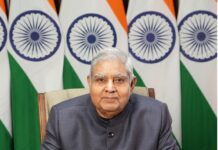An MSc in any subject is intended to adroit one’s knowledge and widen their scope in the subject. It is a post-graduate level program; a niche after B.Sc in terms of advancements in theoretical and practical knowledge. Statistics is a discipline dealing with the accumulation, syndication, portrayal, and interpretation of data. The average annual course fee is between 5,000 – 50,000 INR depending upon the college chosen. While the average package ranges between INR 5 to 7 Lakhs annually for the merit and skilled students.
Top Colleges offering MSc Statistics and Syllabus
Having a degree of MSc (Master of Science) in Statistics is a 2-year Post-Graduation degree that can be pursued, provided that a person is in the accomplishment of either a B.A. (Honors)/ BSc (Honors) in Statistics or Mathematics, or a graduation in a similar stream from an acknowledged University. Below, enlisted are some of the imperial colleges in India that offer MSc in Statistics:
- Loyola College, Chennai
- Madras Christian College, [MCC] Chennai
- Sri Venkateswara College, Delhi University
- Ramjas College, Delhi University
- The Oxford College of Science, Bangalore
- Mithibai College of Arts, Mumbai
- Pondicherry University
- Indian Institute of Technology, [IIT] Kharagpur
- Indian Institute of Technology, [IIT] Kanpur
- Indian Institute of Technology, [IIT] Mumbai
- Amity University
- The University of Kashmir
- The University of Madras
- Cochin University of Science and Technology
- The University of Punjab
- Osmania University
- Aligarh Muslim University
The course structure for 2-year MSc in Statistics is segregated into four semesters enlisted below:
Semester 1–
- Ancillary Mathematics
- Measure Theory and Probability
- Distribution Theory
- Matrix Algebra and Numerical Analysis (Practical)
- Distribution Theory (Practical)
- Computer Programming (Practical)
Semester 2–
- Inference 1
- Sample Surveys
- Linear Models and Regression Analysis
- Inference 1 (Practical)
- Sample Surveys (Practical)
- Linear Models and Regression Analysis (Practical)
Semester 3–
- Inference 2
- Design of Experiments
- Time Series Analysis
- Inference 2 (Practical)
- Design of Experiments (Practical)
- Time Series Analysis (Practical)
Semester 4–
- Multivariate Analysis
- Econometrics and Economics Statistics
- Environmental Studies
Career Prospect and Jobs after MSc in Statistics
Securing a Degree in MSc in Statistics would enable and enhance one’s abilities to:
- Analyze chunks of data.
- Extract the correlated patterns and draw conclusions based upon the data.
- Act upon a set of data systematically.
- Solve issues methodically.
- Represent data in a formulated and organized manner.
Accomplishing an MSc in Statistics projects a farrago of further opportunities to either go for a job in a relevant field or further broaden the aspects of Statistics by going for a PhD.
The job aspect of this degree is auspicious and lucrative. Some of the crest job opportunities available in the private sector for an MSc holder in Statistics include:
- Investment Analyst: This includes performing various checks & analysis upon facts and figures based upon which firms and organizations make investment decisions. The average annual pay grade of an Investment Analyst ranges between 5-9 lakhs INR annually.
- Statistician: The crucial role of a Statistician is to apply the concepts and theoretical methods of Statistics for the collection, analysis and interpretation of data. The scope of Statisticians varies from Private companies involved in stocks, market research, public opinions, industries involved in quantitative & qualitative product development, to name a few. The average annual salary of a Statistician ranges between 3-6 lakhs annually.
- Software Programmer: Statistics enables to analyze chunks of data and formulate conclusions based upon this data. As a Software Programmer, a person can go for a visual representation of data on platforms such as Tableau, Quilk, and PowerBl. The average annual pay grade of a Software Programmer ranges from 4-6 lakhs INR yearly.
- Cost Estimator: As the name suggests, Cost Estimators estimate the time, money, materials, and resources required to accomplish specific tasks such as manufacturing of a product, construction of a building, or any service based upon the collection and analysis of data provided to them. The average annual salary of a Cost Estimator ranges between 6-8 lakhs yearly.
- Government Analyst: Governments on various levels require plenty of economic and statistical data for its smooth functioning. After excelling in the relevant government exams for this job description, a person is eligible for job descriptions such as District Statistical Officer, responsible for the collection of information from the district, analyzing it, and sharing with the State Authorities.
Further Education Prospect after MSc in Statistics
A degree in M.Stat./ M.A./ MSc in Statistics or equivalent disciplines such as Mathematics and Science makes one eligible for a PhD in Statistics. This PhD is intended for students who wish to pursue in-depth research in the field of Statistics and develop a lamina flow with the concepts of Statistics. However, the financial aspect and duration of this course should be taken into consideration before opting for this course.
Eligibility and Top Colleges
Students wanting to pursue a PhD in Statistics are subjected to abide by the following criteria:
- M.Stat/ M.A/ MSc in Statistics or equivalent discipline accomplished from a granted university.
- An aggregate score of at least 50% (45% for SC/ST/OBC candidates) secured during post-graduation.
- Should have Mathematics and Statistics as the core subjects at the 10+2 level.
- Provisional based admission is available for candidates awaiting their Post-Graduation results.
Some of the apex colleges that offer PhD in Statistics are:
- Shailesh J. Mehta School of Management, Mumbai.
- Indian Institute of Foreign Trade, New Delhi.
- Narsee Monjee Institute of Management Studies, Mumbai.
- The Department of Management Studies in Indian Institute of Technology, Chennai.
- Department of Management Studies IIT, Delhi.
- Indian Institute of Management, Ranchi.
- Indian Institute of Foreign Trade [IIFT] in Kolkata.
- Amrita School of Business, Tamil Nadu.
- Centurion University of Technology and Management, Bhubaneshwar.
Admission Process:
While the admission process for this discipline is variable for different colleges, the critical aspects on which colleges grant admission are:
- Performance in respective entrance exams.
- Merit obtained in the Post-Graduation Degree.
- Performance in the Personal interview rounds.
Course Structure
PhD IN Statistics is a 2-year semester-based program, semester-wise course break-up of the subjects covered are:
Semester 1–
- Research Methodology
- Advanced Queuing Systems
- Advanced Trends in Statistics
- Laplace Distributions
- Specialization Circular Distributions
- Longitudinal Data Analysis
- Limit Theorems and Stability of Random Sums
- Stochastic Models in Queuing Theory
Semester 2–
- Dissertation and Viva-voce
Job Prospect
An aspirant accomplishing a PhD in Statistics would sustain the following advantages:
- A Doctorate credits capabilities to perform independent researches on the highest possible levels.
- Since PhD is the pinnacle of Statistics, recruiters would prefer offering pivotal vacancies with lucrative offers.
- Statistics is intrinsically an applied Science; the demands with these accolades are always high and promising.Teaching/lecturer as an accredited Professional is also an eminent option.
- If a Government job is what one seeks, PhD in Statistics will work as a timbre to appear for Indian Statistical Services (ISS) examination conducted by UPSC every year.
Some of the prolific job opportunities available for PhD holders in Statistics are:
- Economists: They develop forecasts on variable issues such as energy costs, inflation, interest rates, exchange rates, business cycles, and taxes based upon the research, collection and analysis of data. The average annual salary ranges from 6.5 to 7 lakhs INR yearly.
- Biostatistician: They analyze data & develop statistics on living things during medical researches and draw conclusions based upon them which are in-turn used by companies to design and execute these research studies. The average annual salary ranges between 9.5-10 lakhs INR annually.
- Enumerators: They are usually in charge of the census operations for families, their ages, genders and any such aspects. They record all such factual information. The average annual salary ranges between 6-7 lakhs INR annually.
Thus, one can choose a path as per their need and priority and accordingly act post-MSc in Statistics. The career path is lucrative in both ways, and the rest depends on the priority.


















































